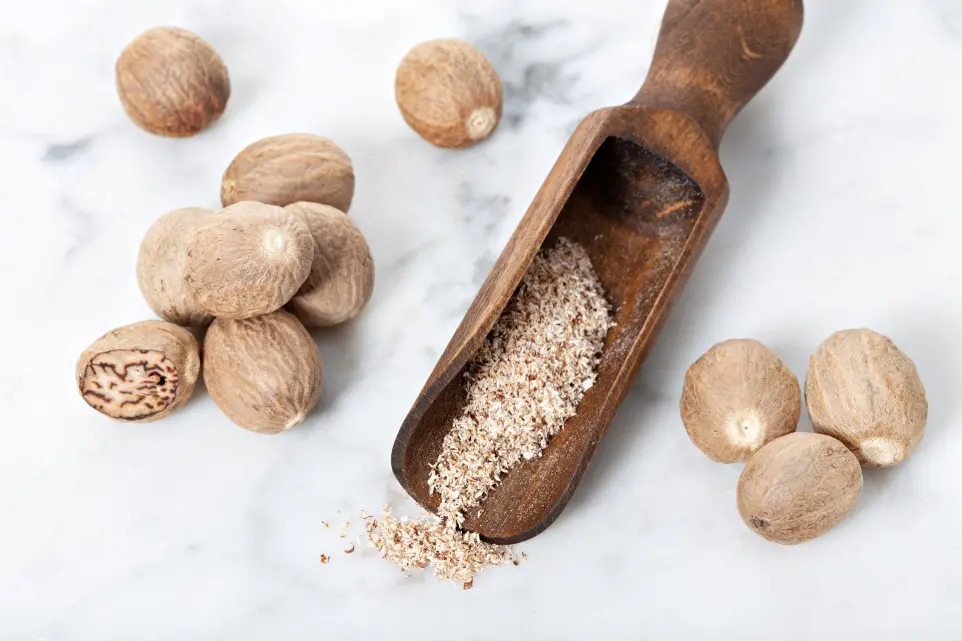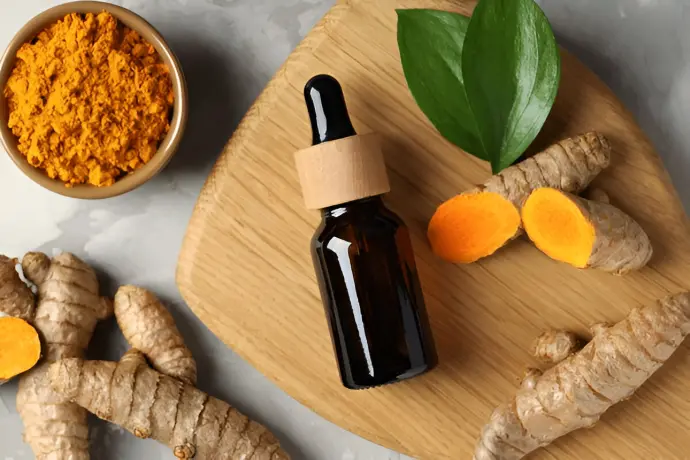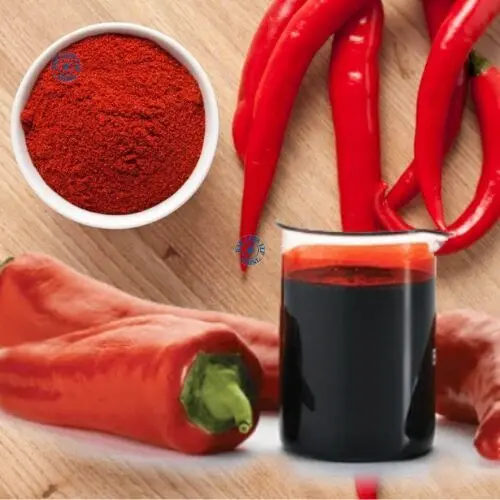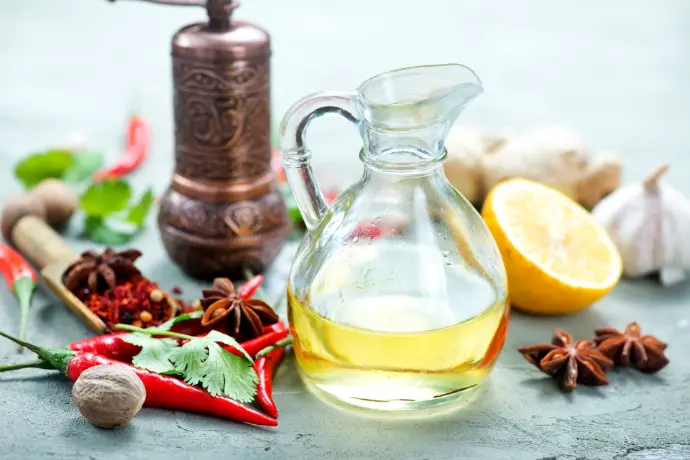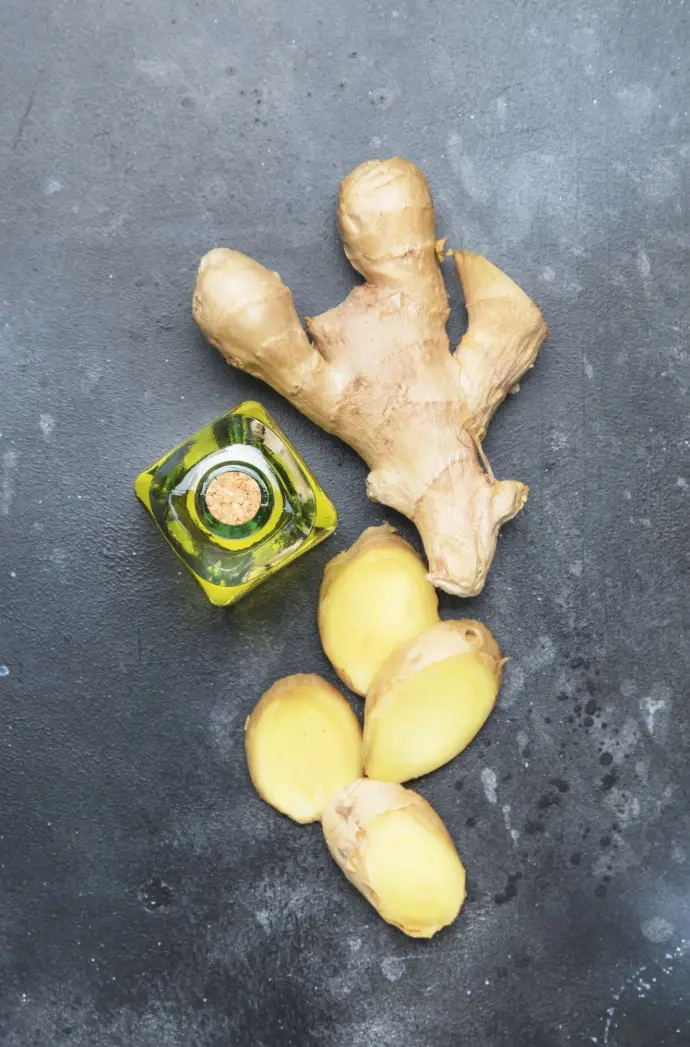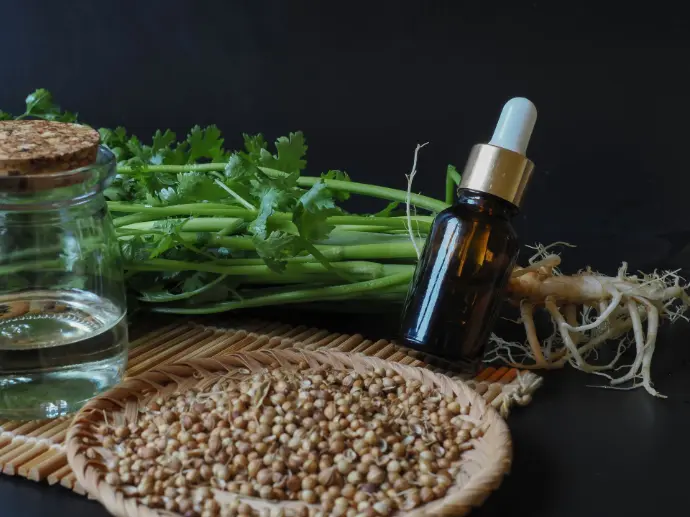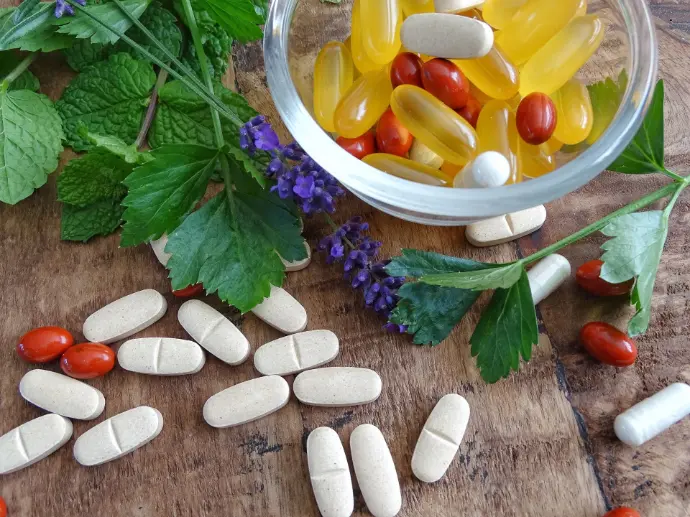About Product
Nutmeg Oleoresin appears as a light-yellow oil extracted from the spice. Basically, it marries nutmeg butter with the essential oil. Back in the 1600s, this warming seasoning was so prized that only the well-to-do ever kept it on hand. That early bling factor helped spark what historians now call the Spice Wars. People even ripped nutmeg trees out of the ground just to limit its supply.
The oleoresin is sometimes branded as "oil of myristica" and plays host to a cocktail of chemicals. Myristicin, sabinene, pinene, and a few more terpenes pop up in every batch, but none are set in stone. The same myristicin that gives the spice its warm edge can flip to a mild hallucinate when consumed in large doses, so caution is smart. Nutmeg butter carries both the fixed and volatile oils, along with trimyristin and myristic acid. Some manufacturers swap it straight for cocoa butter, while others blend it with cottonseed or palm oil for creams, balms, and pharmacy go-tos.
Nutmeg oleoresin shows up in all kinds of kitchen favorites. Snack makers sprinkle it into bread, pastry, and candy. Sausage chefs rely on the oil for that warm, spicy kick. Bartenders use it in stand-up cocktails and laid-back mocktails. Perfume houses add a drop for an inviting base note, while toothpaste brands chase a fresher finish. Doctors and herbalists lean on the extract for tummy troubles, nerve calmers, and sore-joint relief.
Extractor works with supercritical CO2, so every drop stays bright and clean. Big temperature-controlled tanks mean we can set aside plenty of stock to meet hurry-up orders. Quality control labs test the raw spice before grinding, and seasoned chemists triple-check numbers like color and density. Clients get smooth, consistent nutmeg oleoresin shipped on schedule.
Agrawal Exports pairs that plant-power with transparent paperwork and traceable supply chains. Specifications change from region to region, so we match every request. Samples ship quickly and customers decide before they commit. Repeat buyers say the flavor never drops off, and that kind of reliability pays bills.
Composition
- Oils Compund: Contains compounds like eugenol, myristicin, and safrole that contribute to nutmeg’s characteristic aroma and flavor.
- Active Compounds: Eugenol (responsible for nutmeg’s warm, spicy flavor) and myristicin (which provides the signature nutmeg scent and is known for its psychoactive properties in large quantities).
- Other Components: Organic acids, resins, sugars, and proteins present in the oleoresin
Physical Characteristics
- Appearance: Golden yellow to brownish viscous liquid, depending on concentration.
- Odor: Warm, spicy, slightly sweet with earthy undertones.
- Taste: Rich, warm, and aromatic with sweet and slightly bitter undertones.
Health Benefit
- Pain Relief & Anti-inflammatory:
Nutmeg has been traditionally used for its pain-relieving properties, especially in conditions like arthritis, muscle pain, and headaches.
- Antioxidant Protection:
Nutmeg Oleoresin is rich in antioxidants that help reduce oxidative stress and protect cells from damage.
- Digestive Health:
Helps stimulate digestion, relieve indigestion, and reduce symptoms like bloating and discomfort.
- Skin Health:
Known for its anti-inflammatory and soothing properties, helping with skin irritation, acne, and promoting a healthy complexion.
- Cognitive Function:
Some studies suggest that nutmeg can help improve cognitive function and has mild sedative effects when consumed in small quantities.
Key Features
- Source: Extracted from nutmeg seeds (Myristica fragrans).
- Active Ingredient: Eugenol, myristicin, and other essential oils.
- Extraction Method: Solvent extraction and steam distillation.
- Physical Characteristics: Golden yellow to brownish viscous liquid with a warm, sweet aroma.
- Applications: Food, cosmetics, pharmaceuticals, textiles.
- Health Benefits: Pain relief, anti-inflammatory, antioxidants, digestive health, skin health, cognitive function.
Application
Flavoring Agent
This ingredient brings a bold, head-turning taste to just about anything-meat, cheese, pastries, candy, soda, even the toughest craft booze.
Aromatic Agent
Crafty perfumers and cosmetic brands sprinkle it in whenever they want a scent that feels both fresh and exotic.
Therapeutic Booster
Researchers lean on it because it doubles as a skin-friendly antiseptic, a calm-the-fire anti-inflammatory, and a germ-fighting microbicide. Youll find it hiding in ointments for rheumatism, pills for nerve pain, cough syrups that actually work, and sleep creams meant to chase insomnia away.
·Nutritional Sidekick
Add a drop if lunch feels blah; it wakes up the appetite and gives the gut a gentle nudge. Herbalists claim it helps mop up toxins and keeps skin looking less tired than it probably feels.
Food Industry:
Nutmeg Oleoresin is used for flavoring sauces, baked goods, desserts, dairy products, beverages, and spice mixes, providing a rich, aromatic taste.
Cosmetics and Personal Care:
Used in skincare formulations for its soothing and anti-inflammatory properties. Common in body creams, scrubs, perfumes, and hair products.
Pharmaceuticals:
Known for its anti-inflammatory, analgesic, and antioxidant properties. Nutmeg Oleoresin is used in pain relief creams, digestive health supplements, and treatments for muscle soreness.
